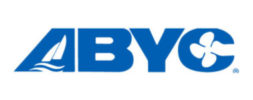Marine Concepts goes green
Who says that watching television is a waste of time? Certainly not the folks at Marine Concepts, who credit a TV show with providing the inspiration to devise an environmentally friendly way to make plugs for hulls, decks and small parts.
After a two-year development effort, the Cape Coral, Fla.-based fiberglass tooling company began using a soy-based foam instead of urethane to sculpt parts late last year, migrating fully to soy in January.
“If it needs to be machined, we’re using soy,” says Andrei Cular, the Marine Concepts engineer responsible for developing the new formula.
Company officials estimate they spent more than $10,000 on developing the product, which doesn’t require users to wear respiratory equipment during its application. While there might be cost savings down the road, it’s too soon to tell, says Bob Long, Marine Concepts president and co-owner, with wife Karen.
“It’s more user-friendly is the basic thing,” Long says. “We don’t have to equip the guys with headgear and protective gear, so it’s more environmentally friendly and friendlier to the operator.”
Cular says the idea for soy foam plugs came to him while watching a cable TV show about new materials and latest technologies. One segment featured a new foam used to insulate homes, and Cular distinctly remembers the host grabbing a chunk of the foam and popping it in his mouth, explaining that it was soy-based.
“Oil prices were going up, material prices were going up, and I thought this might be a better way,” says Cular. Soon after viewing that program, Cular started working directly with one of the few chemists in the country who was formulating foam from soy. “We went back and forth on design specs until we got it just right,” Cular says. “We’re still tweaking it, working on issues related to temperature right now.”
Cular believes cost savings could be substantial, noting that a gallon of urethane is about a dollar higher than a gallon of the soy material. Since urethane is petroleum-based, its price has risen considerably as oil prices have spiked recently. However, Marine Concepts has invested about $1 million in new equipment recently, so any savings derived from using the soy are being tempered by equipment costs.
Using soy foam “gives us a more stable, fire-retardant product,” Cular says. “It allows us to build a better product, a better-quality mold.”
The secret ingredients
This is not the first time Cular has shown his entrepreneurial side.
For years before joining Marine Concepts in 1999, Cular passed the headquarters building on his way to go fishing. Cular was working in the computer field while studying for an engineering degree at the University of South Florida in Tampa when he became determined to work at the company.
“It took a few months to get Bob’s attention and get him to take a chance on me, but I started working here two years before I graduated,” Cular says.
Since the soy foam is a formulation of existing components, it cannot be patented. But much like the formula for Coca-Cola and Colonel Sanders’ secret recipe, company officials are keeping secret the identity of the company producing the foam and its formulation.
“If one of our competitors wanted, they could come up with a similar formula,” Cular says. “We took material that was out [on the market] to develop exactly what we needed.”
Although Marine Concepts also works in the aerospace, RV and automotive industries, the marine industry has long been the company’s bread and butter and continues to be so, says Long, who bought the company in 1993 and has been in the marine industry for 43 years.
“We know them, and they know us,” Long says of boat builders. “We are diversifying slowly, gradually getting into other areas. With our equipment and technology, we could do anything with fiberglass, but boating’s been strong enough to sustain us – I don’t want to slight our boating customers.”
Those customers include Hinckley Yachts, Grady-White, Chaparral, Regulator Marine, Monterey, Bennington, Ocean Yachts, Sabre Yachts, Cobalt Boats, Donzi and many others that are increasingly relying on Marine Concepts for both plugs and molds.
“Sixty percent of the plugs we make, we also make the molds, and that business is growing,” says Long. “If you make a mistake, it gets expensive.”
The company employs more than 100 people in three South Florida locations. After opening a new facility and expanding another last year, Marine Concepts is reaping the benefits now, Long notes. Sales are up 30 percent over the previous year, and employee head count is up 10 percent.
Marine Concept’s main Cape Coral plant was expanded by 8,000 square feet last year and features five CNC robotic routers. The Sarasota plant does traditional boat building and mold detailing. The newest facility, in Pine Island, is an 8,000-square-foot facility that opened last year to produce molds and do mold detailing.
“The guys are continually coming up with new ideas,” Long says of his engineering department. “They’re always doing research on new materials, equipment and processes,” so he wasn’t surprised when Cular approached him with the idea for soy foam.
Besides continuing to tweak the soy foam formulation, Cular says the company is working with its supplier to devise a version of the soy foam that will meet U.S. Coast Guard approval as a flotation device.
“I’m not out to sell soy,” Long says, “but I encourage everyone in the industry to seek new materials and new ways to do things. Some people would say, ‘Hey, what we’re doing works; don’t [mess] with it,’ but I think there are new ideas out there, other ways of doing things that are worth exploring.
“You’re going to make mistakes, through trial and error,” he continues, “but that’s how you get better.”




